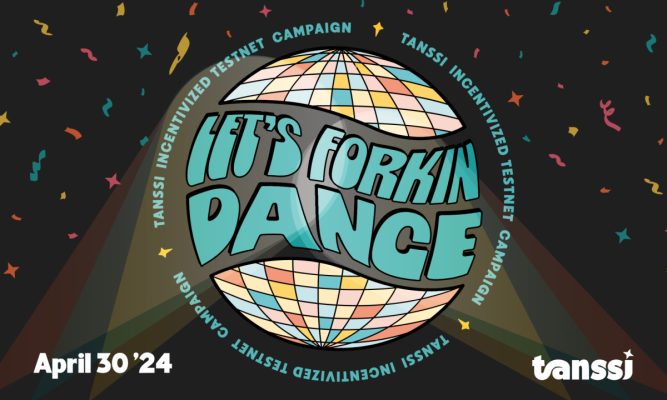From some users’ points of view, blockchain is supposed to be a new technology for which people still struggle to find applications. Then, how does it come that people are already discussing Blockchain 3.0?
Well, that is because the standard for Blockchain 2.0 was already established by the Ethereum platform with its dApps and smart contracts. And even if Ethereum expanded the possibilities for distributed ledger technologies, people still felt there was much more room for improvement.
What Is Blockchain 3.0?
Blockchain 3.0 is the third development phase for blockchain technology. As Bitcoin inaugurated the first phase of blockchain, the idea of a technology that supports a new financial system evolved even more.
Bitcoin came not as magical internet money but as a digital asset that governments and banks cannot control. Since then, a network of miners has maintained the transaction infrastructure that agrees on a common blockchain using the Proof of Work consensus mechanism.
Although Bitcoin is the most spread and has the highest market price, it is still prolonged and hard to use. Because of that, developers started coming up with slightly better alternatives.
The strife for a cryptocurrency that is better than Bitcoin brought new ideas that materialized into the Ethereum platform.
The Ethereum crowd sale took place in 2014 and marked the milestone for Blockchain 2.0. Vitalik Buterin’s Ethereum platform went live on the July 30, 2015, with 72 million coins minted, and brought smart contracts and decentralized applications (dApps) to the market.
This allowed to prove and expand the numerous possibilities blockchain can bring to the business world, aside from cryptocurrency.
Besides the financial aspects, the community started to look into the blockchain issues 2.0 kept from the first generation and the new issues that appeared.
So, the idea of Blockchain 3.0 occurred as a sum of attempts to fix the current industry’s problems regarding privacy, scalability, and interoperability.
What’s Expected of It?
In Terms of Privacy
As most blockchains are public, anyone can check transactions and addresses. Therefore, chain analysis and dusting attacks are risks everyone has been taking by using cryptocurrencies.
Projects like Monero, Verge, and Zcash have attempted to solve these problems by implementing a mix of stealth addresses, ring signatures, and transaction data mixing. However, they are not considered to be a part of Blockchain 3.0.
But the third generation of blockchain will have to develop a viable improved privacy solution.
One of them may be MimbleWimble, a Blockchain 3.0 privacy protocol that replaces addresses and contains a scripting language with blocks filled only with inputs, outputs, and signature data.
In Terms of Scalability
It is no secret that Bitcoin is slow and reaches ten transactions per second (TPS) at best (with an average of 7 TPS). Furthermore, mining Bitcoin requires tremendous investments and energy resources.
Therefore, solutions like Layer Two, Lightning Network, Proof-of-Stake (PoS) and Directed Acyclic Graphs (DAGs) come to facilitate blockchain performance, as well as significantly reduce energy consumption.
In Terms of Interoperability
Blockchain and cryptocurrency lack an interoperability protocol. Currently, the only way to jump from one blockchain to another is by trading your cryptocurrency via a third-party exchange.
But this situation would be highly inconvenient for blockchains that are used for purposes unrelated to cryptocurrencies.
Therefore, Blockchain 3.0 needs a mechanism for transferring data and digital assets between blockchains without requiring a centralized third party.
Blockchain 3.0 Projects Breakthrough Attempts
AION
AION is the native cryptocurrency of the Open Application Network public infrastructure. It is based on a multi-tier blockchain system that addresses privacy, transparency, and scalability. Their primary focus is on blockchain interoperability.
The platform hosts and connects other blockchains, similar to how the internet connects websites. Its ecosystem is formed of 3 main components:
- The token bridge (for exchanging tokens);
- The AION virtual machine (which is a modified version of the Ethereum virtual machine that supports applications written in Solidity and Java);
- The AION API (which is an interface for developers to build dApps).
Zilliqa
Zilliqa is a cryptocurrency project that aims to make blockchain more efficient, scalable, and fast by using a hybrid PoW consensus protocol that uses sharding on its mainnet.
Blockchain bloat is a problem many blockchains face, including Bitcoin and Ethereum. The bloat slows down the network and hikes the transaction fees. With Zilliqa’s perspective, there could be no TPS limit.
The model they use works by dividing the work done on the network with throughput increasing every 600 new nodes. Therefore, the network scales as it grows in size.
EOS
EOS is the native cryptocurrency of EOSIO.
EOSIO is a decentralized platform providing fast and free transaction processing that supports smart contracts and dApps, and looks toward developing a platform that works as an operating system.
The platform’s goal is to give an environment where it is easy to develop applications that can support millions of transactions per second.
Current Issues Solving
In terms of scalability and privacy, Blockchain 3.0 is sure to bring the industry to a whole new level.
As most blockchains can handle tens or hundreds of transactions per second (and in a few cases thousands), jumping to millions of tps can place blockchain-based payment systems above traditional payment processors like Visa or Mastercard.
By achieving such performances, blockchain payment systems could be able to support a global, widely adopted financial system.
Also, by improving the network’s level of privacy, Chain analysis and Dusting attacks will be less likely to happen.
And consensus systems other than Proof of Work – like Proof of Stake – will create a blockchain without mining, reducing energy consumption.
Key Takeaways
Blockchain 3.0 is the third development phase for blockchain technology. It represents a sum of attempts to fix the current problems in the industry.
The third generation of blockchain is expected to come with significant improvements regarding interoperability, scalability, and privacy.
Some of the most notable crypto projects positioned as Blockchain 3.0 are Aion, Zilliqa, and EOSIO.


